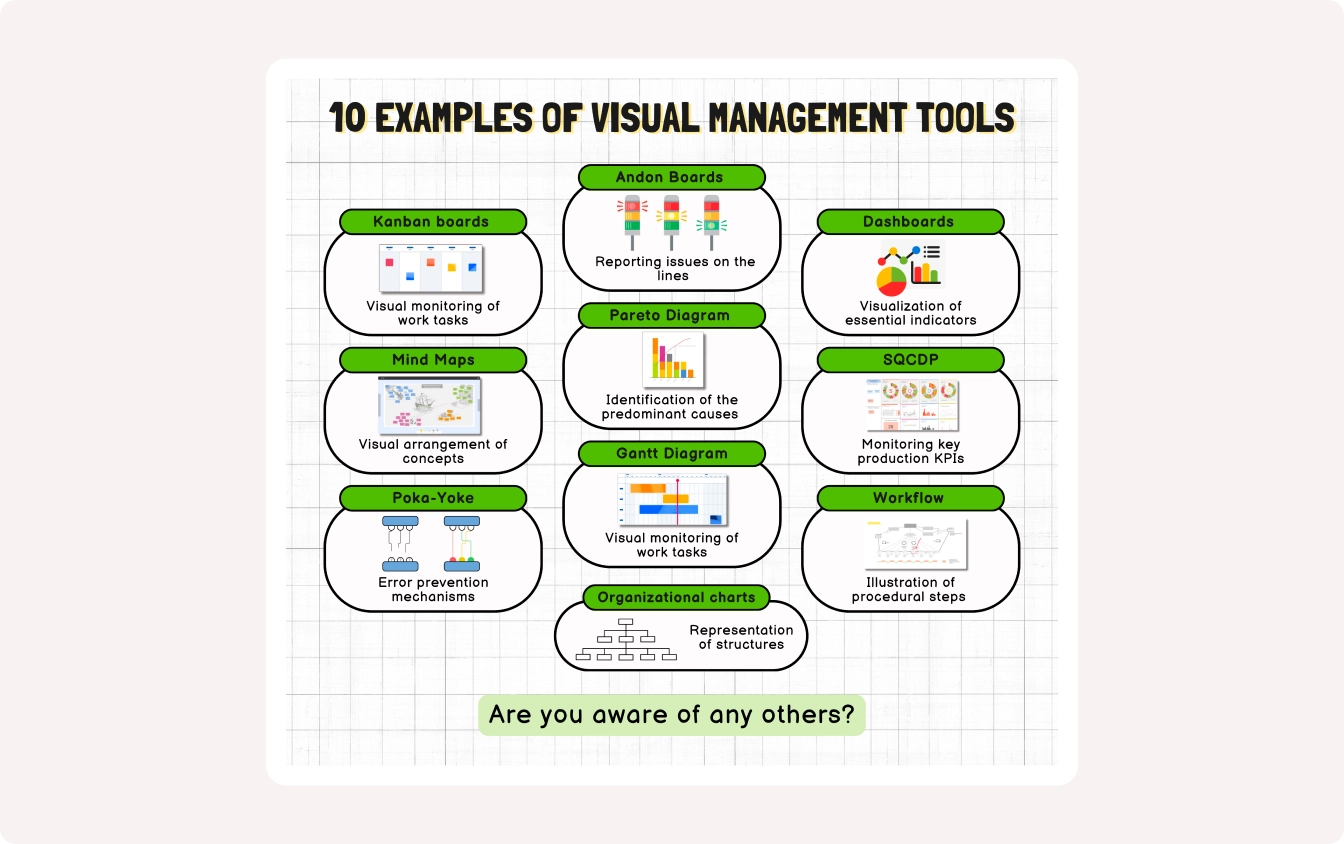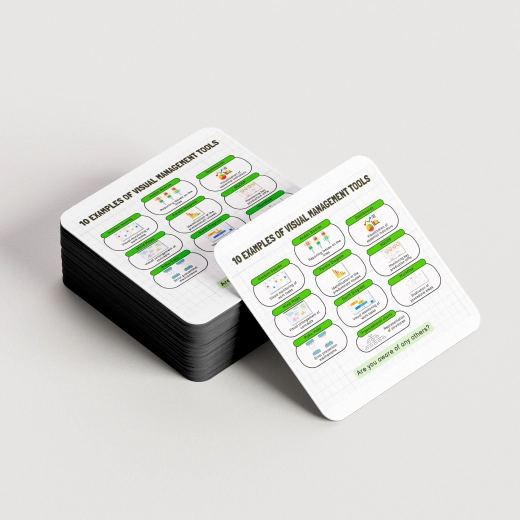Lean
- 7 minute read
Learn how KPI Trees drive efficiency in Lean Manufacturing. Discover key metrics like OEE, Cycle Time & tips for implementing effective KPI Trees.

It’s easy to see why visual management a key element of corporate communication is now. Thanks to simple visual indicators, it guarantees rapid and efficient transmission of information, enabling rapid reaction when necessary.
However, the successful implementation of a visual management tool depends on several key factors, such as a clear understanding of your needs and environment, the selection of the appropriate tool, and the integration of all relevant teams in the development and deployment of the solution.
You now have all the keys you need to successfully integrate your visual management tool!
